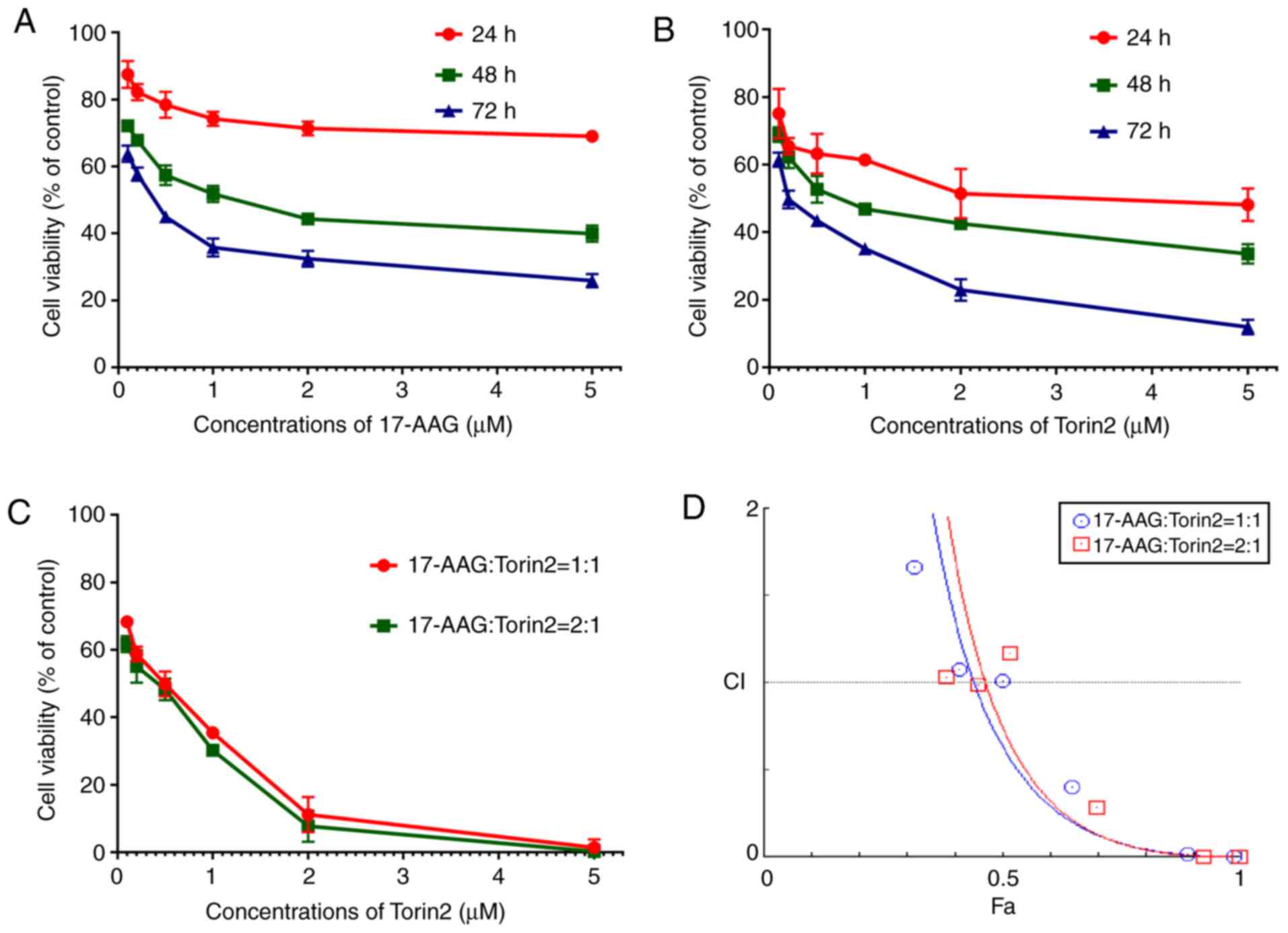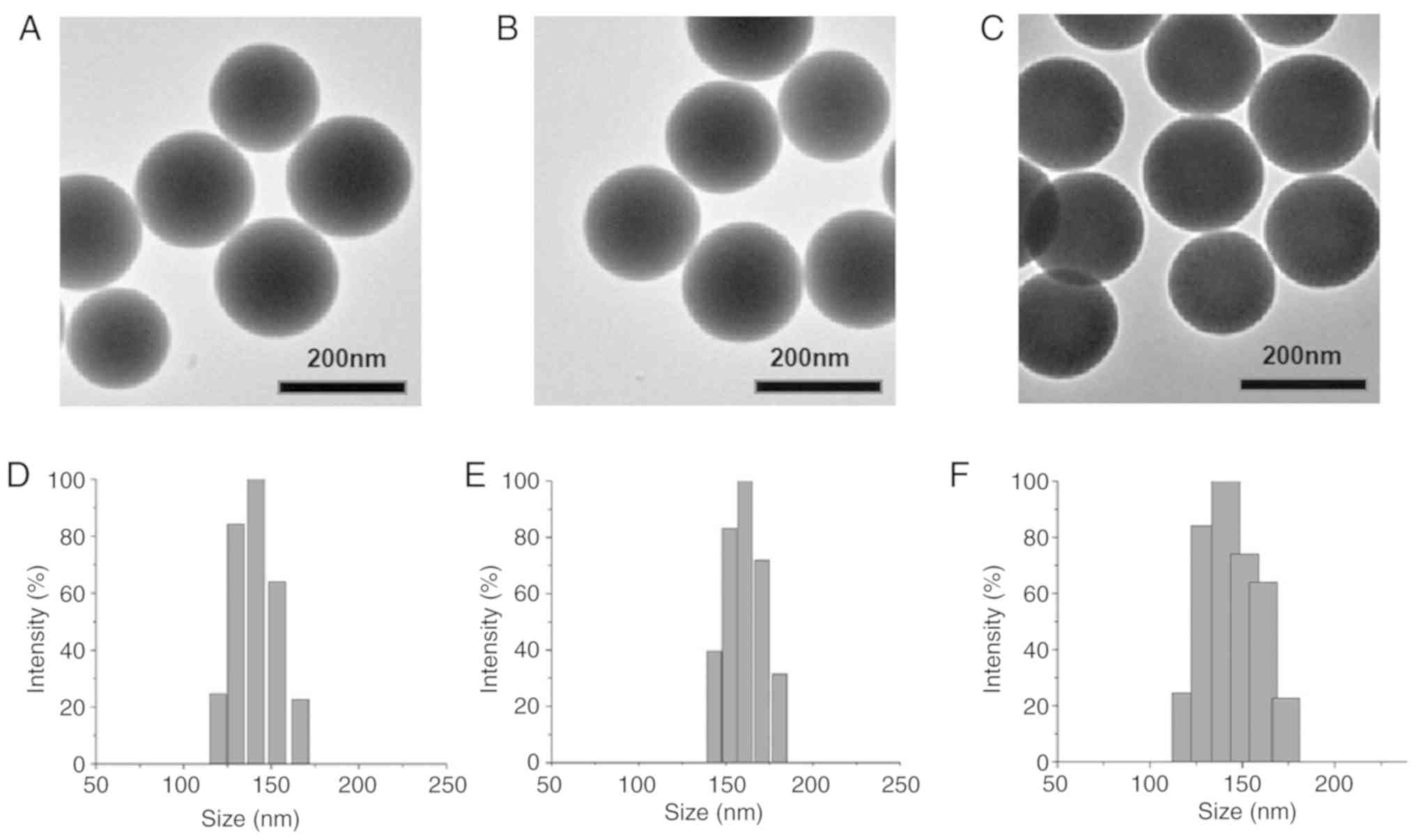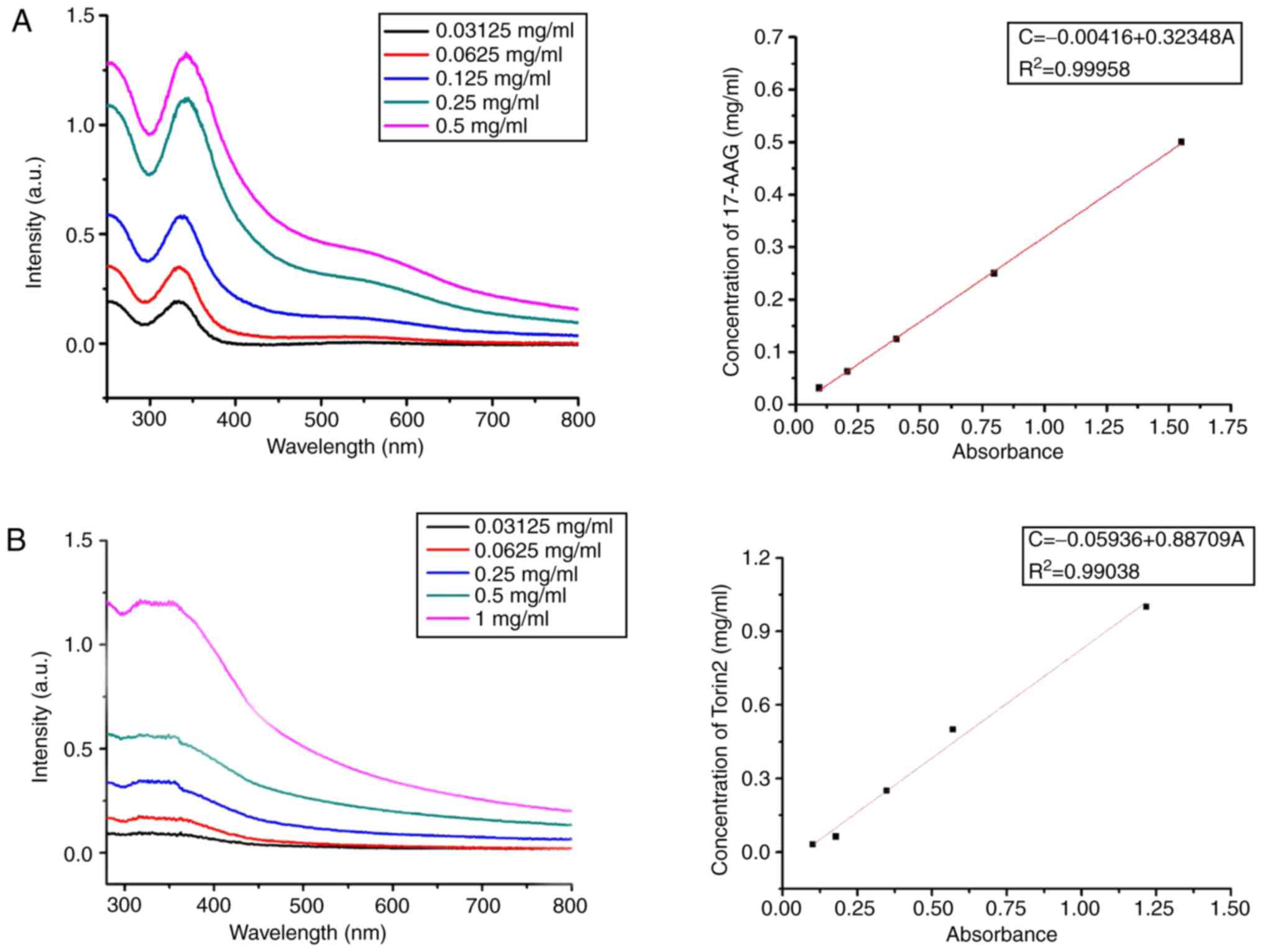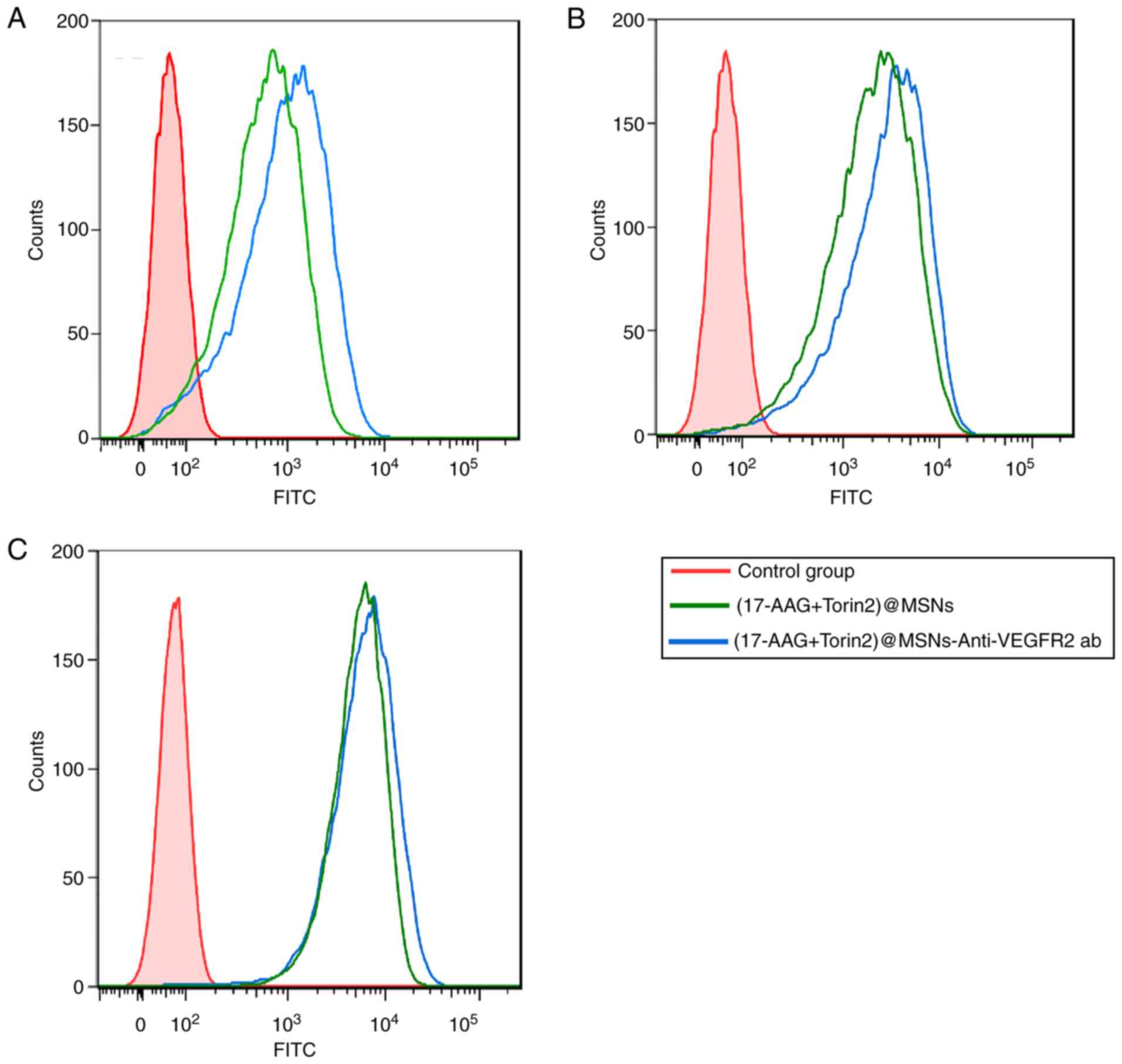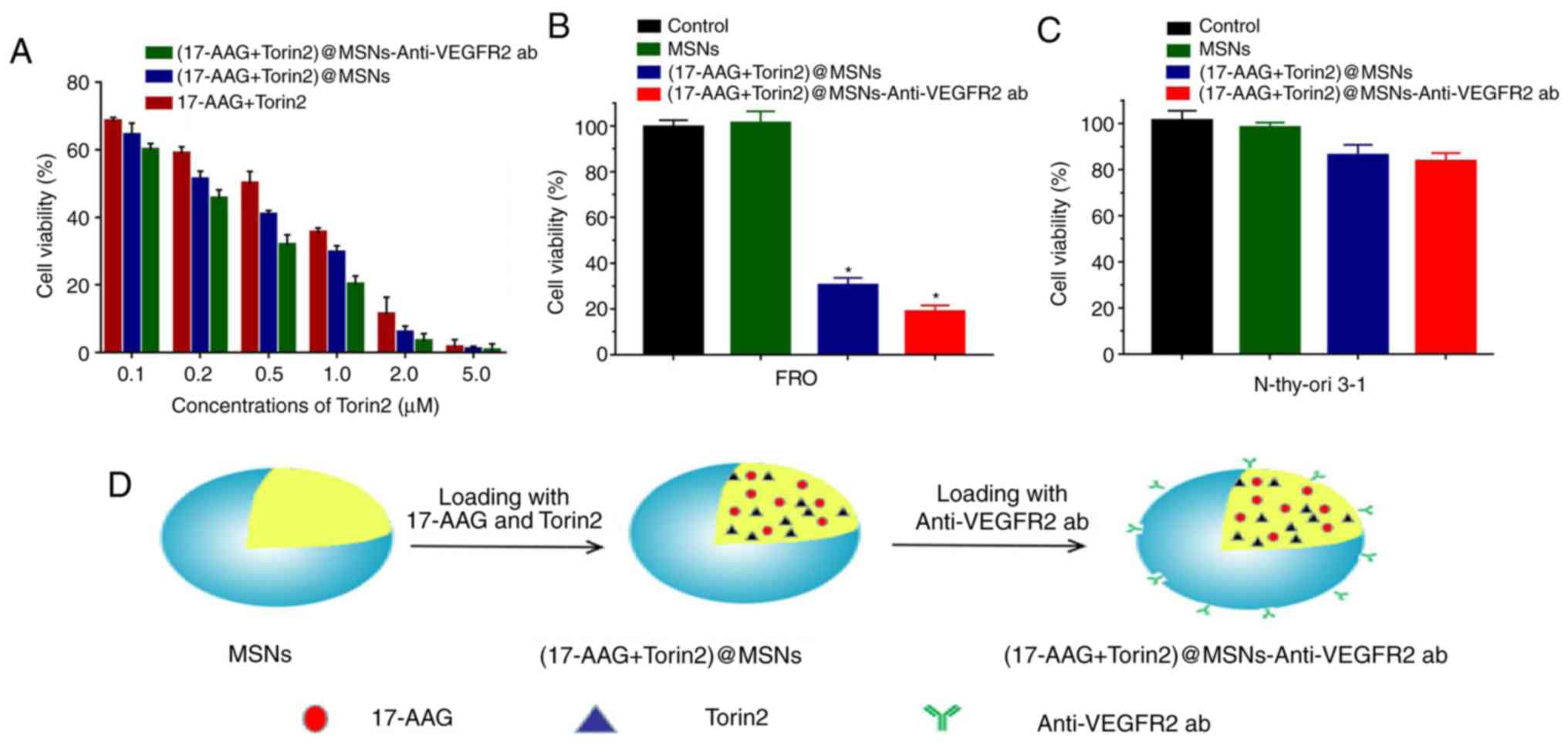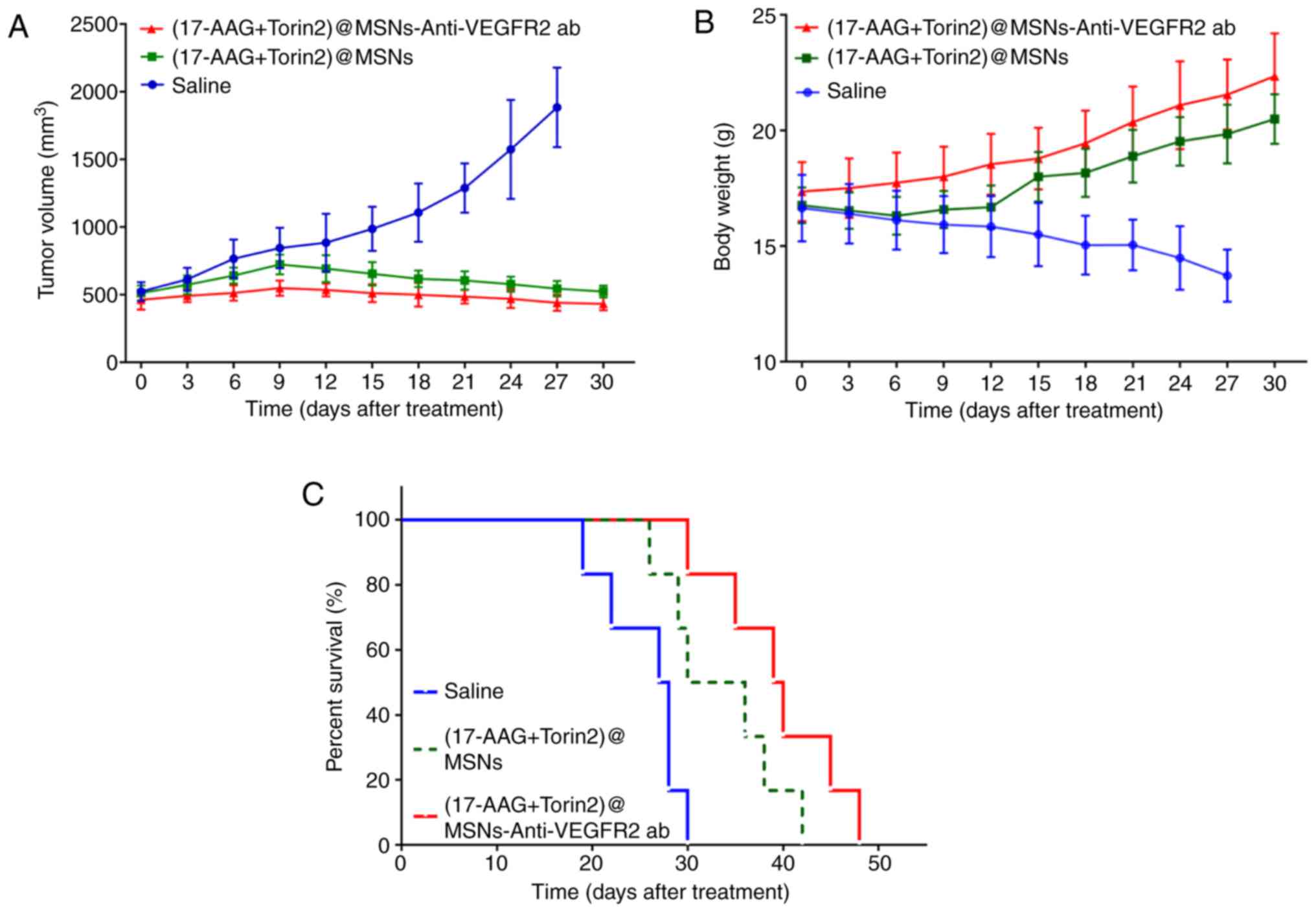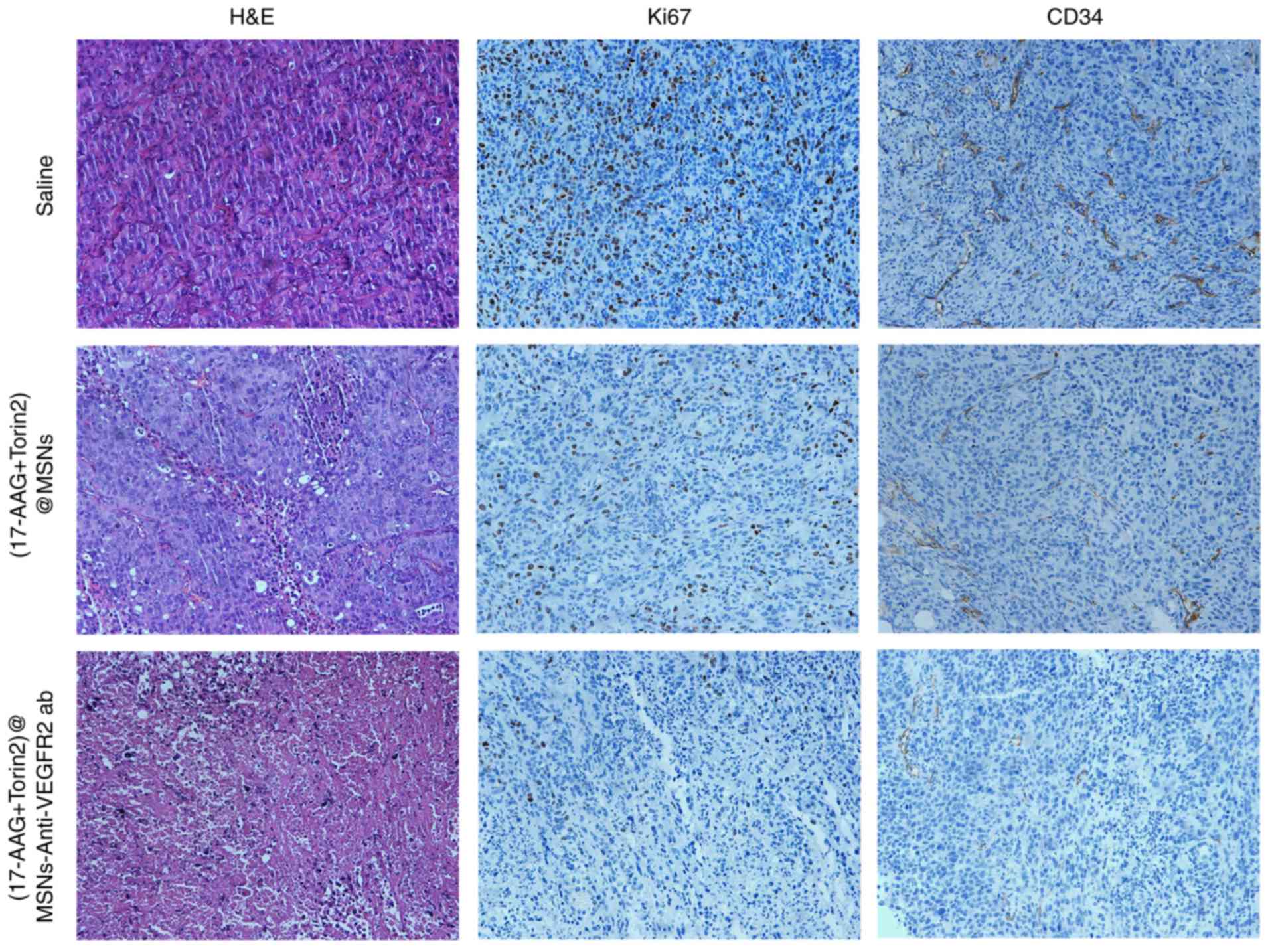|
1
|
Valerio L, Pieruzzi L, Giani C, Agate L,
Bottici V, Lorusso L, Cappagli V, Puleo L, Matrone A, Viola D, et
al: Targeted therapy in thyroid cancer: State of the art. Clin
Oncol (R Coll Radiol). 29:316–324. 2017. View Article : Google Scholar : PubMed/NCBI
|
|
2
|
Hsu KT, Yu XM, Audhya AW, Jaume JC, Lloyd
RV, Miyamoto S, Prolla TA and Chen H: Novel approaches in
anaplastic thyroid cancer therapy. Oncologist. 19:1148–1155. 2014.
View Article : Google Scholar : PubMed/NCBI
|
|
3
|
Neff RL, Farrar WB, Kloos RT and Burman
KD: Anaplastic thyroid cancer. Endocrinol Metab Clin North Am.
37:525–538. 2008. View Article : Google Scholar : PubMed/NCBI
|
|
4
|
Zhang R, Zhang Y, Tan J, Wang H, Zhang G,
Li N, Meng Z, Zhang F, Chang J and Wang R: Antitumor effect of
131I-Labeled Anti-VEGFR2 targeted mesoporous silica
nanoparticles in anaplastic thyroid cancer. Nanoscale Res Lett.
14:962019. View Article : Google Scholar : PubMed/NCBI
|
|
5
|
Cabanillas ME, Zafereo M, Gunn GB and
Ferrarotto R: Anaplastic thyroid carcinoma: Treatment in the age of
molecular targeted therapy. J Oncol Pract. 12:511–518. 2016.
View Article : Google Scholar : PubMed/NCBI
|
|
6
|
O'Neill JP, Power D, Condron C,
Bouchier-Hayes D and Walsh M: Anaplastic thyroid cancer,
tumorigenesis and therapy. Ir J Med Sci. 179:9–15. 2010. View Article : Google Scholar : PubMed/NCBI
|
|
7
|
Sawada M, Oishi T, Komatsu H, Sato S,
Chikumi J, Nonaka M, Kudoh A, Osaku D and Harada T: Serum vascular
endothelial growth factor A and vascular endothelial growth factor
receptor 2 as prognostic biomarkers for uterine cervical cancer.
Int J Clin Oncol. 24:1612–1619. 2019. View Article : Google Scholar : PubMed/NCBI
|
|
8
|
Brands RC, Knierim LM, De Donno F,
Steinacker V, Hartmann S, Seher A, Kübler AC and Müller-Richter
UDA: Targeting VEGFR and FGFR in head and neck squamous cell
carcinoma in vitro. Oncol Rep. 38:1877–1885. 2017.
View Article : Google Scholar : PubMed/NCBI
|
|
9
|
Costache MI, Ioana M, Iordache S, Ene D,
Costache CA and Săftoiu A: VEGF expression in pancreatic cancer and
other malignancies: A review of the literature. Rom J Intern Med.
53:199–208. 2015.PubMed/NCBI
|
|
10
|
Jolly C and Morimoto RI: Role of the heat
shock response and molecular chaperones in oncogenesis and cell
death. J Natl Cancer Inst. 92:1564–1572. 2000. View Article : Google Scholar : PubMed/NCBI
|
|
11
|
Porter JR, Fritz CC and Depew KM:
Discovery and development of Hsp90 inhibitors: A promising pathway
for cancer therapy. Curr Opin Chem Biol. 14:412–420. 2010.
View Article : Google Scholar : PubMed/NCBI
|
|
12
|
Kim YS, Alarcon SV, Lee S, Lee MJ,
Giaccone G, Neckers L and Trepel JB: Update on Hsp90 inhibitors in
clinical trial. Curr Top Med Chem. 9:1479–1492. 2009. View Article : Google Scholar : PubMed/NCBI
|
|
13
|
Maloney A and Workman P: HSP90 as a new
therapeutic target for cancer therapy: The story unfolds. Expert
Opin Biol Ther. 2:3–24. 2002. View Article : Google Scholar : PubMed/NCBI
|
|
14
|
Kim SH, Kang JG, Kim CS, Ihm SH, Choi MG,
Yoo HJ and Lee SJ: 17-Allylamino-17-demethoxygeldanamycin and
Herbimycin A Induce Cell Death by modulating beta-Catenin and
PI3K/AKT signaling in FRO anaplastic thyroid carcinoma cells.
Anticancer Res. 35:5453–5460. 2015.PubMed/NCBI
|
|
15
|
White PT, Subramanian C, Zhu Q, Zhang H,
Zhao H, Gallagher R, Timmermann BN, Blagg BS and Cohen MS: Novel
HSP90 inhibitors effectively target functions of thyroid cancer
stem cell preventing migration and invasion. Surgery. 159:142–151.
2016. View Article : Google Scholar : PubMed/NCBI
|
|
16
|
Ahmed M, Hussain AR, Bavi P, Ahmed SO, Al
Sobhi SS, Al-Dayel F, Uddin S and Al-Kuraya KS: High prevalence of
mTOR complex activity can be targeted using Torin2 in papillary
thyroid carcinoma. Carcinogenesis. 35:1564–1572. 2014. View Article : Google Scholar : PubMed/NCBI
|
|
17
|
Beauchamp EM and Platanias LC: The
evolution of the TOR pathway and its role in cancer. Oncogene.
32:3923–3932. 2013. View Article : Google Scholar : PubMed/NCBI
|
|
18
|
Tavares C, Eloy C, Melo M, Gaspar da Rocha
A, Pestana A, Batista R, Bueno Ferreira L, Rios E, Sobrinho Simões
M and Soares P: mTOR pathway in papillary thyroid carcinoma:
Different contributions of mTORC1 and mTORC2 complexes for tumor
behavior and SLC5A5 mRNA expression. Int J Mol Sci. 19(pii):
E14482018. View Article : Google Scholar : PubMed/NCBI
|
|
19
|
Faustino A, Couto JP, Pópulo H, Rocha AS,
Pardal F, Cameselle-Teijeiro JM, Lopes JM, Sobrinho-Simões M and
Soares P: mTOR pathway overactivation in BRAF mutated papillary
thyroid carcinoma. J Clin Endocrinol Metab. 97:E1139–E1149. 2012.
View Article : Google Scholar : PubMed/NCBI
|
|
20
|
Sidera K and Patsavoudi E: HSP90
inhibitors: Current development and potential in cancer therapy.
Recent Pat Anticancer Drug Discov. 9:1–20. 2014. View Article : Google Scholar : PubMed/NCBI
|
|
21
|
Chen Y, Chen H and Shi J: In vivo
bio-safety evaluations and diagnostic/therapeutic applications of
chemically designed mesoporous silica nanoparticles. Adv Mater.
25:3144–3176. 2013. View Article : Google Scholar : PubMed/NCBI
|
|
22
|
Rosenholm JM, Mamaeva V, Sahlgren C and
Lindén M: Nanoparticles in targeted cancer therapy: Mesoporous
silica nanoparticles entering preclinical development stage.
Nanomedicine (Lond). 7:111–120. 2012. View Article : Google Scholar : PubMed/NCBI
|
|
23
|
Benezra M, Penate-Medina O, Zanzonico PB,
Schaer D, Ow H, Burns A, DeStanchina E, Longo V, Herz E, Iyer S, et
al: Multimodal silica nanoparticles are effective cancer-targeted
probes in a model of human melanoma. J Clin Invest. 121:2768–2780.
2011. View
Article : Google Scholar : PubMed/NCBI
|
|
24
|
Tang F, Li L and Chen D: Mesoporous silica
nanoparticles: Synthesis, biocompatibility and drug delivery. Adv
Mater. 24:1504–1534. 2012. View Article : Google Scholar : PubMed/NCBI
|
|
25
|
Naz S, Shamoon M, Wang R, Zhang L, Zhou J
and Chen J: Advances in therapeutic implications of inorganic drug
delivery Nano-platforms for cancer. Int J Mol Sci. 20(pii):
E9652019. View Article : Google Scholar : PubMed/NCBI
|
|
26
|
Goel S, Chen F, Hong H, Valdovinos HF,
Hernandez R, Shi S, Barnhart TE and Cai:
VEGF121-conjugated mesoporous silica nanoparticle: A
tumor targeted drug delivery system. ACS Appl Mater Interfaces.
6:21677–21685. 2014. View Article : Google Scholar : PubMed/NCBI
|
|
27
|
Tran VA and Lee SW: A prominent anchoring
effect on the kinetic control of drug release from mesoporous
silica nanoparticles (MSNs). J Colloid Interface Sci. 510:345–356.
2018. View Article : Google Scholar : PubMed/NCBI
|
|
28
|
Ghalhar MG, Akbarzadeh A, Rahmati M,
Mellatyar H, Dariushnejad H, Zarghami N and Barkhordari A:
Comparison of inhibitory effects of 17-AAG nanoparticles and free
17-AAG on HSP90 gene expression in breast cancer. Asian Pac J
Cancer Prev. 15:7113–7118. 2014. View Article : Google Scholar : PubMed/NCBI
|
|
29
|
Xu Y, Zhang C, Chen D, Zhao J, Shen Z, Wu
Y and Zhu Y: Effect of HSP90 inhibitor in pheochromocytoma PC12
cells: An experimental investigation. Tumour Biol. 34:4065–4071.
2013. View Article : Google Scholar : PubMed/NCBI
|
|
30
|
Chou TC: Drug combination studies and
their synergy quantification using the Chou-Talalay method. Cancer
Res. 70:440–446. 2010. View Article : Google Scholar : PubMed/NCBI
|
|
31
|
Liang C, Wang H, Zhang M, Cheng W, Li Z,
Nie J, Liu G, Lian D, Xie Z, Huang L and Zeng X: Self-controlled
release of Oxaliplatin prodrug from d-α-tocopheryl polyethylene
glycol 1000 succinate (TPGS) functionalized mesoporous silica
nanoparticles for cancer therapy. J Colloid Interface Sci.
525:1–10. 2018. View Article : Google Scholar : PubMed/NCBI
|
|
32
|
Mortensen JH, Jeppesen M, Pilgaard L,
Agger R, Duroux M, Zachar V and Moos T: Targeted antiepidermal
growth factor receptor (cetuximab) immunoliposomes enhance cellular
uptake in vitro and exhibit increased accumulation in an
intracranial model of glioblastoma multiforme. J Drug Deliv.
2013:2092052013. View Article : Google Scholar : PubMed/NCBI
|
|
33
|
Reddi HV, Driscoll CB, Madde P, Milosevic
D, Hurley RM, McDonough SJ, Hallanger-Johnson J, McIver B and
Eberhardt NL: Redifferentiation and induction of tumor suppressors
miR-122 and miR-375 by the PAX8/PPARgamma fusion protein inhibits
anaplastic thyroid cancer: A novel therapeutic strategy. Cancer
Gene Ther. 20:267–275. 2013. View Article : Google Scholar : PubMed/NCBI
|
|
34
|
Kim H, Kim SW, Seok KH, Hwang CW, Ahn JC,
Jin JO and Kang HW: Hypericin-assisted photodynamic therapy against
anaplastic thyroid cancer. Photodiagnosis Photodyn Ther. 24:15–21.
2018. View Article : Google Scholar : PubMed/NCBI
|
|
35
|
Hsiao PJ, Lu MY, Chiang FY, Shin SJ, Tai
YD and Juo SH: Vascular endothelial growth factor gene
polymorphisms in thyroid cancer. J Endocrinol. 195:265–270. 2007.
View Article : Google Scholar : PubMed/NCBI
|
|
36
|
Soh EY, Duh QY, Sobhi SA, Young DM,
Epstein HD, Wong MG, Garcia YK, Min YD, Grossman RF, Siperstein AE
and Clark OH: Vascular endothelial growth factor expression is
higher in differentiated thyroid cancer than in normal or benign
thyroid. J Clin Endocrinol Metab. 82:3741–3747. 1997. View Article : Google Scholar : PubMed/NCBI
|
|
37
|
Ferrarini M, Heltai S, Zocchi MR and
Rugarli C: Unusual expression and localization of heat-shock
proteins in human tumor cells. Int J Cancer. 51:613–619. 1992.
View Article : Google Scholar : PubMed/NCBI
|
|
38
|
Banerji U, Judson I and Workman P: The
clinical applications of heat shock protein inhibitors in
cancer-present and future. Curr Cancer Drug Targets. 3:385–390.
2003. View Article : Google Scholar : PubMed/NCBI
|
|
39
|
Braga-Basaria M, Hardy E, Gottfried R,
Burman KD, Saji M and Ringel MD:
17-Allylamino-17-demethoxygeldanamycin activity against thyroid
cancer cell lines correlates with heat shock protein 90 levels. J
Clin Endocrinol Metab. 89:2982–2988. 2004. View Article : Google Scholar : PubMed/NCBI
|
|
40
|
Sato S, Fujita N and Tsuruo T: Modulation
of Akt kinase activity by binding to Hsp90. Proc Natl Acad Sci USA.
97:10832–10837. 2000. View Article : Google Scholar : PubMed/NCBI
|
|
41
|
Sadowski SM, Boufraqech M, Zhang L, Mehta
A, Kapur P, Zhang Y, Li Z, Shen M and Kebebew E: Torin2 targets
dysregulated pathways in anaplastic thyroid cancer and inhibits
tumor growth and metastasis. Oncotarget. 6:18038–18049. 2015.
View Article : Google Scholar : PubMed/NCBI
|
|
42
|
Courtney KD, Corcoran RB and Engelman JA:
The PI3K pathway as drug target in human cancer. J Clin Oncol.
28:1075–1083. 2010. View Article : Google Scholar : PubMed/NCBI
|
|
43
|
Milosevic Z, Pesic M, Stankovic T, Dinic
J, Milovanovic Z, Stojsic J, Dzodic R, Tanic N and Bankovic J:
Targeting RAS-MAPK-ERK and PI3K-AKT-mTOR signal transduction
pathways to chemosensitize anaplastic thyroid carcinoma. Transl
Res. 164:411–423. 2014. View Article : Google Scholar : PubMed/NCBI
|
|
44
|
De Raedt T, Walton Z, Yecies JL, Li D,
Chen Y, Malone CF, Maertens O, Jeong SM, Bronson RT, Lebleu V, et
al: Exploiting cancer cell vulnerabilities to develop a combination
therapy for ras-driven tumors. Cancer Cell. 20:400–413. 2011.
View Article : Google Scholar : PubMed/NCBI
|
|
45
|
Zhang L, Gu FX, Chan JM, Wang AZ, Langer
RS and Farokhzad OC: Nanoparticles in medicine: Therapeutic
applications and developments. Clin Pharmacol Ther. 83:761–769.
2008. View Article : Google Scholar : PubMed/NCBI
|
|
46
|
Yang Y and Yu C: Advances in silica based
nanoparticles for targeted cancer therapy. Nanomedicine.
12:317–332. 2016. View Article : Google Scholar : PubMed/NCBI
|
|
47
|
So Y, Lee YJ, Lee WW and Chung JK:
Determination of the optimal time for radioiodine therapy in
anaplastic thyroid carcinoma using the adenovirus-mediated transfer
of sodium iodide symporter gene. Oncol Rep. 29:1666–1670. 2013.
View Article : Google Scholar : PubMed/NCBI
|
|
48
|
Zhou M, Chen Y, Adachi M, Wen X, Erwin B,
Mawlawi O, Lai SY and Li C: Single agent nanoparticle for
radiotherapy and radio-photothermal therapy in anaplastic thyroid
cancer. Biomaterials. 57:41–49. 2015. View Article : Google Scholar : PubMed/NCBI
|
|
49
|
Mirzaei-Parsa MJ, Najafabadi MRH, Haeri A,
Zahmatkeshan M, Ebrahimi SA, Pazoki-Toroudi H and Adel M:
Preparation, characterization, and evaluation of the anticancer
activity of Artemether-loaded Nano-Niosomes against breast cancer.
Breast Cancer. 27:243–251. 2020. View Article : Google Scholar : PubMed/NCBI
|















